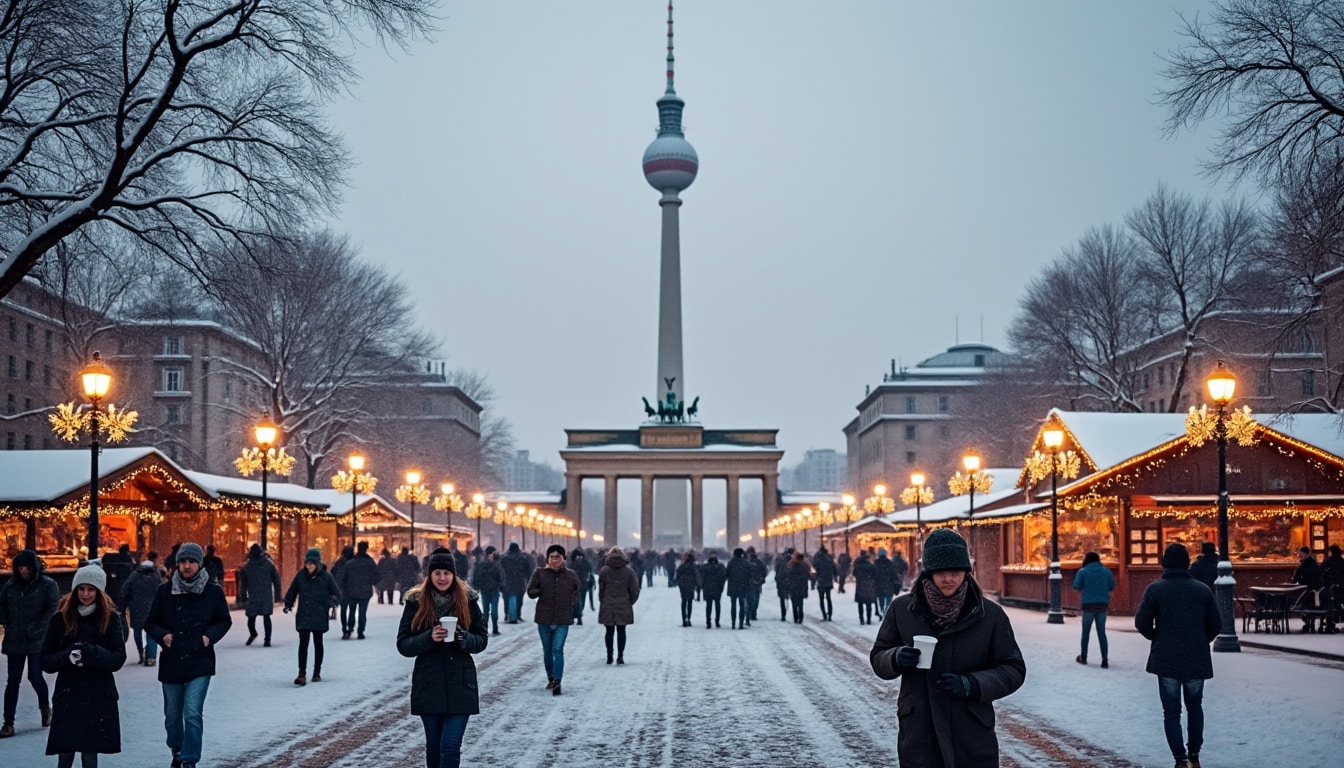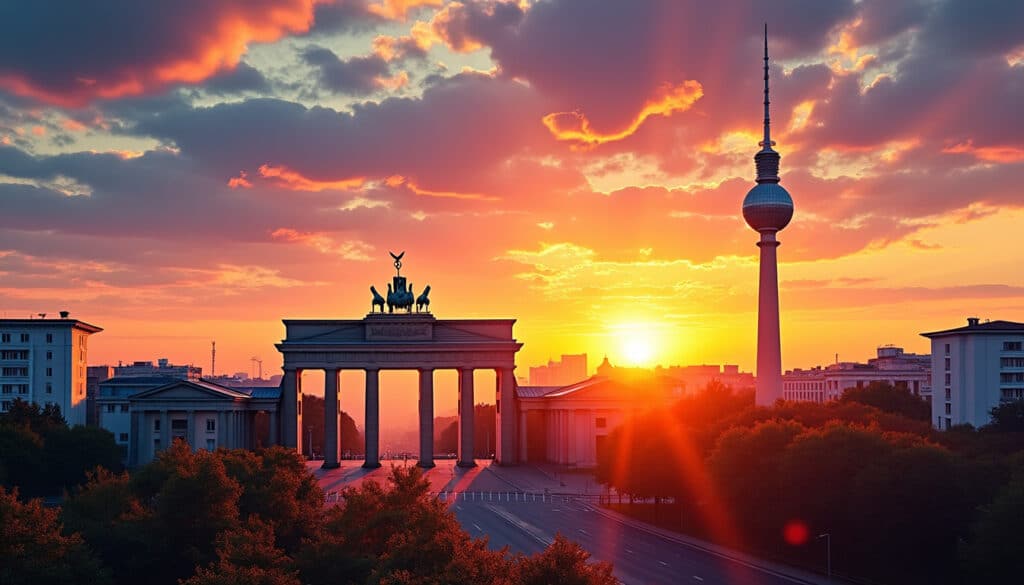As winter descends upon Berlin, the city’s vibrant streets transform into a mystical canvas painted with frosty hues. Locals and visitors alike brace for the biting chill, exploring unique ways to embrace the city’s cold climate. From cozy cafés to a plethora of winter activities, Berlin offers an exhilarating experience that caters to both adventurers and those seeking tranquil spots to keep warm. But how does the cold season affect life in Berlin, and what should you anticipate when visiting this winter wonderland? This in-depth exploration into Berlin’s frosty weather provides insights into its seasonal allure, complete with practical tips and a glimpse into how local culture adapts to the chill.
Understanding Berlin’s Cold Weather Dynamics
Berlin experiences a moderately continental climate with distinctive weather patterns. Its winters are notably cold, with average temperatures hovering around freezing point (0°C or 32°F). Positioned at 52 degrees north latitude, the city is susceptible to both cold and warm air masses, resulting in highly variable weather conditions. Within the urban expanse, the phenomenon of urban heat islands creates slightly warmer microclimates compared to the surrounding countryside, especially noticeable at night.
The typical winter season in Berlin extends from December through February. During this period, daily temperatures range from -3°C (27°F) to 3°C (37°F), with occasional drops to much lower extremities. The record low temperature, set in January 1987, was a chilling -25.3°C (-13.5°F). Though rare in recent years, cold air masses from Siberia can sweep across the city, leading to temporary freezes.
While precipitation is moderately distributed throughout the year, Berlin witnesses increased snowfall during winter months. Such weather draws attention to a different set of commuter challenges, with icy pavements taking precedence. January, being one of the coldest months, can have snow-covered streets, making walking a delightful, yet cautious affair.
| Month | Min Temp (°C) | Max Temp (°C) | Snowfall (days) |
|---|---|---|---|
| December | -1 | 4 | 10 |
| January | -2 | 3 | 12 |
| February | -1.8 | 4.9 | 8 |
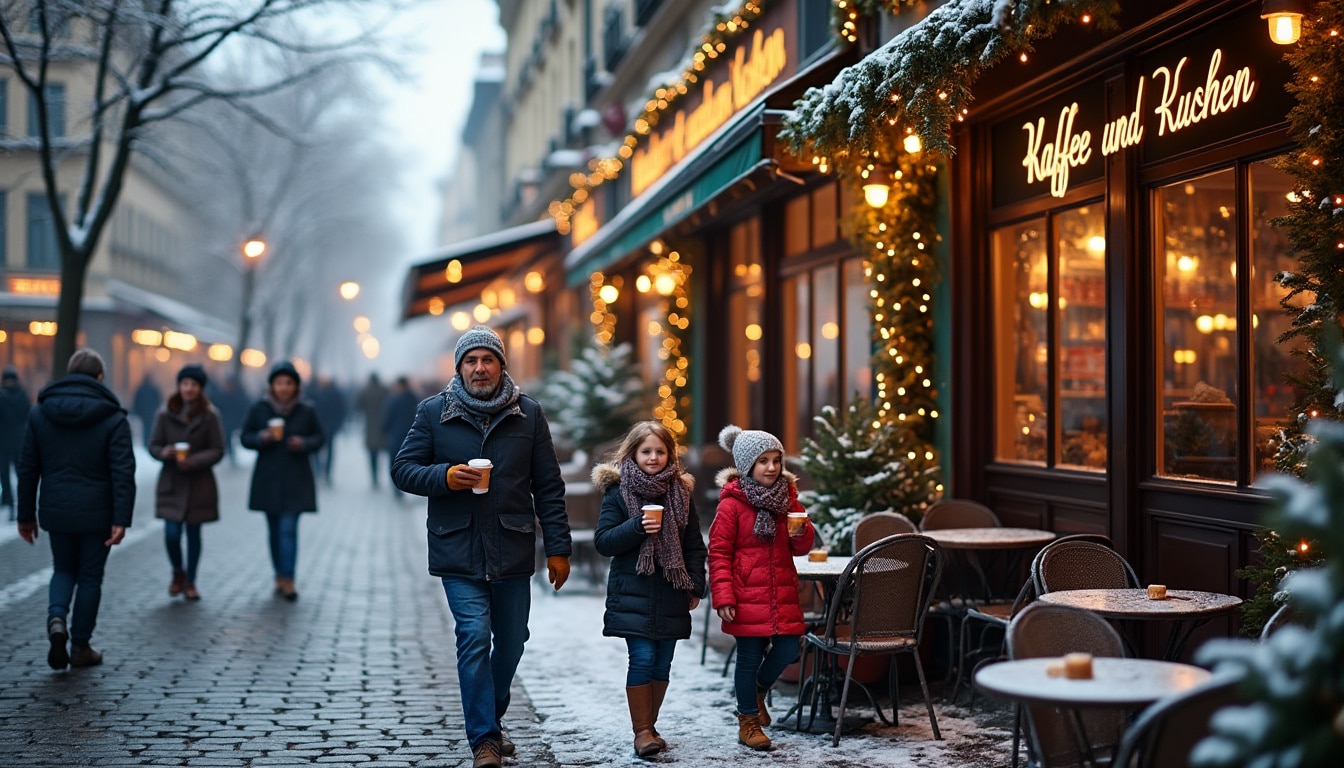
Wind Chill and Precipitation
If planning a visit during the cooler months, it’s crucial to consider the wind chill factor. While the thermometer reads one figure, Berlin’s prevalent winds often amplify the perception of cold. Therefore, understanding local weather forecasts, which provide insights into real-feel temperatures, is beneficial. Moreover, with the city’s exposure to Atlantic currents, periodic mild periods can occur, causing respite from intense cold, but with increased wind and humidity.
In terms of precipitation, snow is a frequent winter visitor, accompanied by rain on warmer days. While Berlin’s urban landscape efficiently manages winter precipitation, travelers should stay prepared with suitable clothing. Fellow travelers recommend attire from renowned outdoor brands like The North Face, Patagonia, and Fjällräven, designed to combat both wind and moisture.
Winter Activities and Cultural Adaptations
The winter season unveils a different side of Berlin, with the cold acting as a catalyst for a myriad of activities and cultural experiences. The sub-zero temperatures enhance the demand for Berlin’s iconic warm beverages like Glühwein (mulled wine) and hot chocolate, often savored in the city’s numerous Christmas markets that sprinkle the cityscape.
Berlin is not just about indoor warmth. Winter sports enthusiasts find joy in activities such as ice skating at one of the city’s rinks, like the Eisstadion Neukölln. Additionally, the surrounding Brandenburg region offers an escape to more extensive ice trails and skiing opportunities, catering to sports fans ready to embrace the cold.
- ❄️ Ice Skating: Eisstadion Neukölln
- 🏂 Skiing: Brandenburg countryside
- 🍷 Glühwein Stops: Various Christmas markets
- ⛄ Winter Festivals: Spandau Christmas Market
Berlin’s culture embraces the cold with warmth displayed through community activities and gatherings. Cafés and pubs across neighborhoods like Mitte and Kreuzberg become sanctuaries where both warmth and social interaction converge. The local culinary scene adapts too, with hearty dishes such as Eisbein (pork knuckle) and Grünkohl (kale stew) gracing restaurant menus to provide much-needed warmth and comfort.
The resilience of Berliners against cold weather is evident in their fashion practices. Arc’teryx and Columbia jackets are frequently spotted, as they strike a perfect balance between style and functionality. Locals showcase their unique fashion sense while braving the outdoors.
Traditional and Modern Festivities
Traditional German Christmas markets are a staple from late November through December, featuring handcrafted goods, festive eats, and the tantalizing aroma of baked treats. However, Berlin’s dynamism doesn’t stop there. As a city known for its cultural richness, Berlin blends tradition with modern influences, making winter festivals a spectacular event.
Alongside these traditional celebrations, contemporary events like Berlin’s annual Film Festival in February attract visitors, offering a chance to explore creative perspectives amidst frosty weather. Similarly, the New Year’s Eve celebrations at Brandenburg Gate mesmerize audiences with fireworks, music, and dancing, proving that Berlin embraces the frigid air with festivity and merriment.
Dressing for Berlin’s Winter
Navigating Berlin’s cold weather requires strategic wardrobe planning. Emphasizing layers is key, as they allow easy adjustment to both indoor and outdoor temperatures. Essential clothing includes thermal base layers, an insulated outer jacket, and accessories like gloves, hats, and scarves. Brands such as Marmot, Helly Hansen, and Canada Goose are renowned for producing clothing that withstands harsh winter conditions.
The choice of materials is pivotal. Wool and polyester blends provide excellent insulation and moisture-wicking properties, suitable for both drizzly and snowy days. Additionally, waterproof shoes and boots, especially Mountain Hardwear and Burton, are indispensable for keeping feet dry and ensuring firm grip on slippery grounds.
| Item | Recommended Brands | Purpose |
|---|---|---|
| Jacket | The North Face, Canada Goose | Warmth and wind protection |
| Boots | Fjällräven, Mountain Hardwear | Waterproof and insulation |
| Thermal Layer | Columbia, Arc’teryx | Base warmth |
| Accessories | Burton, Helly Hansen | Head, hand, neck protection |
Additionally, travelers are advised to have versatile clothing options to handle unpredictable weather shifts, as Berlin’s love for sudden weather surprises means staying ready at all times. Locals often stress the value of scarves and beanies, which prove to be stylish and functional accessories.
Handling Weather Variations
While being wrapped up for warmth is critical, familiarity with weather variations provides comfort during long winter outings. It’s essential to keep tabs on daily forecasts and prepare for fluctuations. Preparedness involves carrying a lightweight backpack to stash shed layers and packaged snacks for energy. With the valuable insight of locals, visitors are advised to enjoy seasonal teas and soups, readily available at corner stands across the city.
The Psychological Impact of Cold Weather
Winter does not simply affect Berlin’s physical landscape but shapes its mental contours too. The city’s transformation under grey winter skies can impact the mental well-being of both locals and tourists. Yet, Berliners approach these challenges with resilience and creativity, displaying unique psychological adaptations to the colder months.
Combating the lack of sunlight, typical in months from November to February, locals prioritize indoor atmospheres that foster connection. The hygge-inspired ambiance in many living spaces and cafes encourages people to cultivate warmth, friendship, and motivation. This practice proves vital in maintaining a positive mindset.
- 📚 Cozy Reading Spots: Popular in book cafes and libraries
- ☕ Social Gatherings: Emphasis on indoor social events
- 🧘 Mindfulness and Relaxation: Meditation and yoga classes
- 🎨 Creative Workshops: Art, crafts, including candle making
Community and Well-being Initiatives
Berlin seeks to cultivate inclusivity, empathy, and outreach, as local organizations, clubs, and initiatives organize winter programs focused on building community resilience. Efforts extend to offering workshops on mental well-being, winter sports participation, and communal gatherings, enhancing feelings of togetherness and reducing isolation during darker months.
The city supports mental health resources by offering seminars on seasonal mood disorders and emphasizing the importance of staying active during winter. These valuable initiatives serve not only as community enrichers but as global examples of tackling cold weather challenges with positivity and innovation.
Connection to Local Culture
Embracing cold weather becomes a cultural exploration in Berlin. Winter invites a fresh creative outlet for artists, with murals transforming city corners into inspirational art pieces when least expected. This initiative highlights Berlin’s unwavering reinforcing of creativity and diversity.
Furthermore, Berlin’s educational institutions and libraries extend their hours and community offerings in winter, emphasizing the importance of continuous learning amid the cold. As a city, Berlin transforms low temperatures into an ever-renewing tableau of reinvention.
FAQ about Cold Weather in Berlin
- How cold does Berlin get in winter months? Berlin experiences winter temperatures ranging from -3°C to 3°C (27°F to 37°F), though extremes can reach lower figures especially with cold Siberian fronts.
- What should I pack for a winter trip to Berlin? Pack layers including thermal base layers, waterproof outerwear, hats, gloves, scarves, and boots to comfortably navigate Berlin’s cold and often wet environment.
- Are there any must-visit winter attractions in Berlin? Yes, Berlin’s Christmas markets, ice skating rinks, and indoor museum treasures such as the Neues Museum offer material for both excitement and education during the winter months.
- Does Berlin offer winter sports activities? Within and around Berlin, options for skiing and outdoor winter sports exist, particularly in the Brandenburg region, which hosts trails and ice paths suited for sports enthusiasts.
- How do locals cope with the lack of sunlight? Many locals embrace indoor activities, community gatherings, and the creation of hygge-inspired environments to counteract the psychological impacts of reduced daylight during winter.

Navigating the climate in Berlin involves understanding its unique variations across the seasons. The city, known for its cultural vibrancy and historical significance, experiences a maritime temperate climate that influences both residents and tourists. Whether you’re strolling the streets of…

Berlin, the vibrant cultural hub of Germany, transforms into a serene winter wonderland during the colder months. While this city is often celebrated for its dynamic nightlife and rich history, its winter season draws attention for a different reason: snowfall.…

Flooding and natural risks in Berlin
The vibrant city of Berlin, known for its rich history and dynamic urban culture, faces its share of natural challenges, particularly flooding. With its intricate network of rivers and canals, Berlin’s flood risks have increasingly become a focal point for…

Berlin, the vibrant capital of Germany, is no stranger to fluctuating weather patterns. As summer approaches, it transforms into a bustling hub where residents and tourists alike bask in the warmth of the season. With its distinct urban culture and…

Berlin, a vibrant city teeming with history, culture, and a unique urban lifestyle, also presents a unique climate dynamic characterized by varying humidity levels throughout the year. For anyone interested in exploring the German capital, understanding the city’s atmospheric nuances…
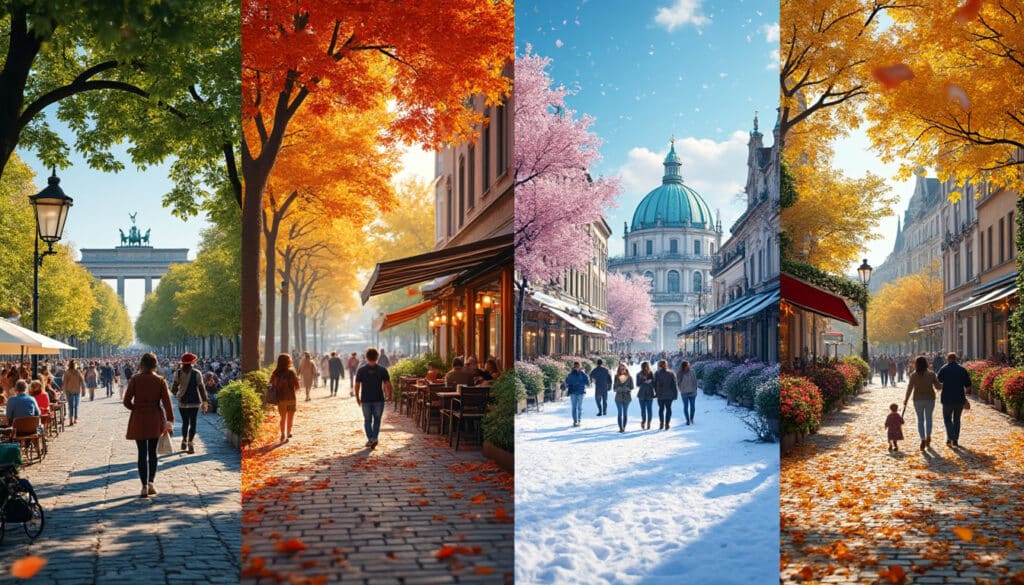
Is Berlin warm throughout the year?
Berlin, the bustling capital of Germany, is a city rich in history, culture, and diverse climate patterns. As a key player in the cultural and political landscape of Europe, understanding Berlin’s weather throughout the year is crucial for both residents…
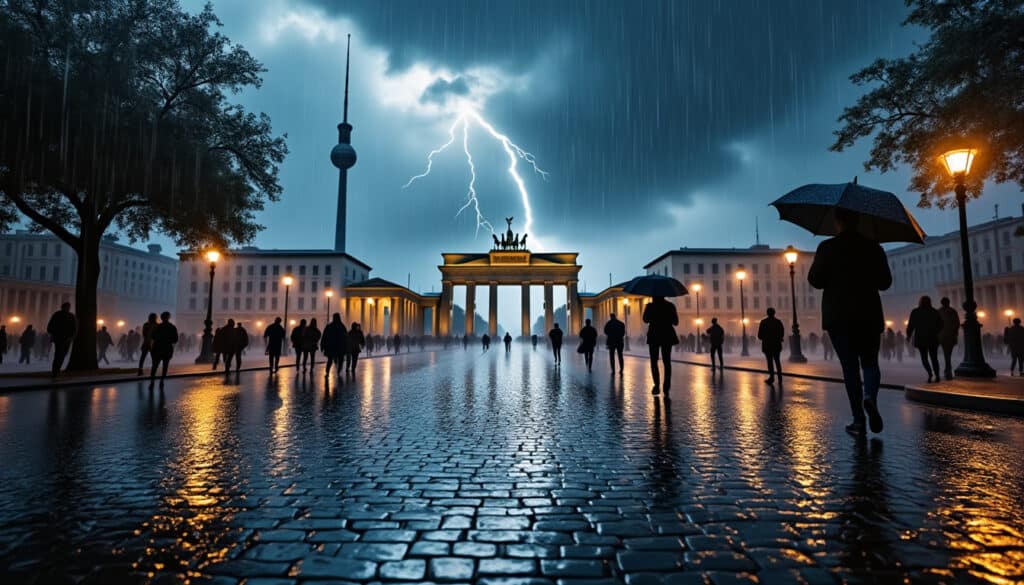
Rain and precipitation in Berlin
Berlin, well-known for its rich historical and cultural heritage, is also characterized by its distinct climate patterns. The city receives an average of 591 mm of rainfall annually, making rain and precipitation a significant aspect of life here. This article…
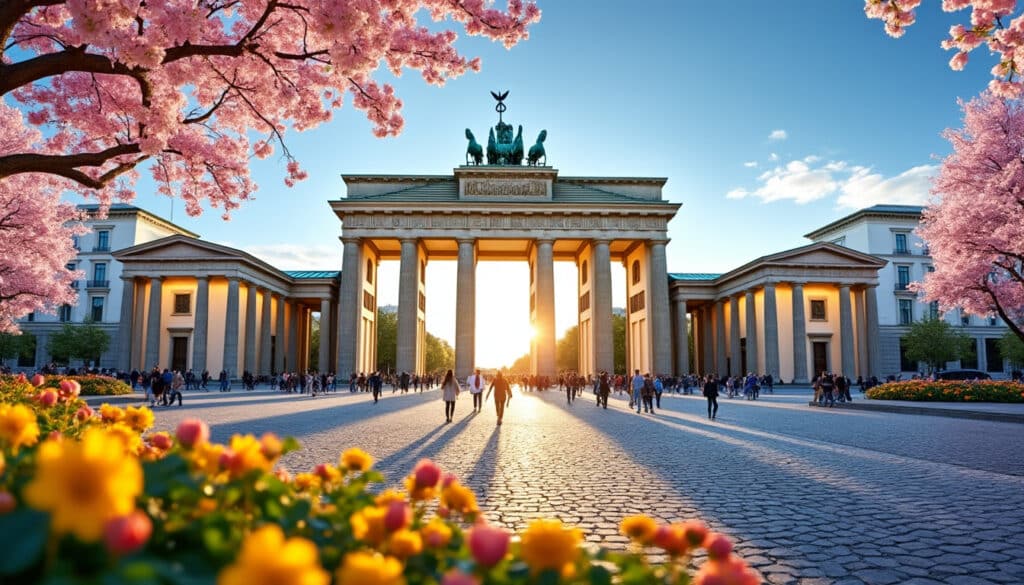
Berlin, Germany’s vibrant capital, experiences a fascinating array of seasonal changes throughout the year. Each season brings its unique charm to this bustling metropolis, making Berlin a captivating destination no matter the time of year. From the Winter Wonderland of…
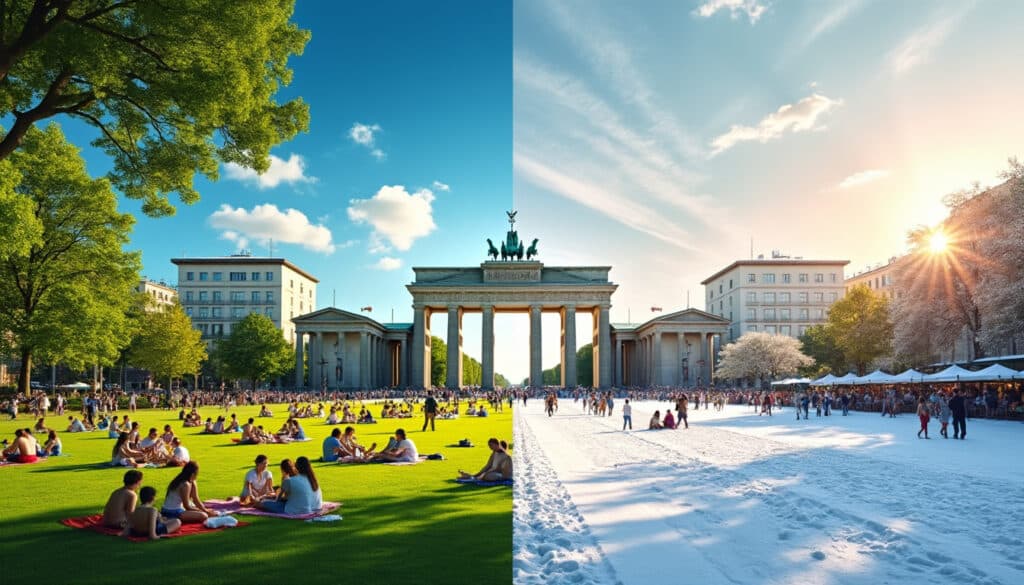
The city of Berlin, capital of Germany, boasts a rich tapestry of culture and history, but many might not realize the weather here is just as compelling. Situated at a latitude of approximately 52 degrees north, Berlin experiences a moderately…
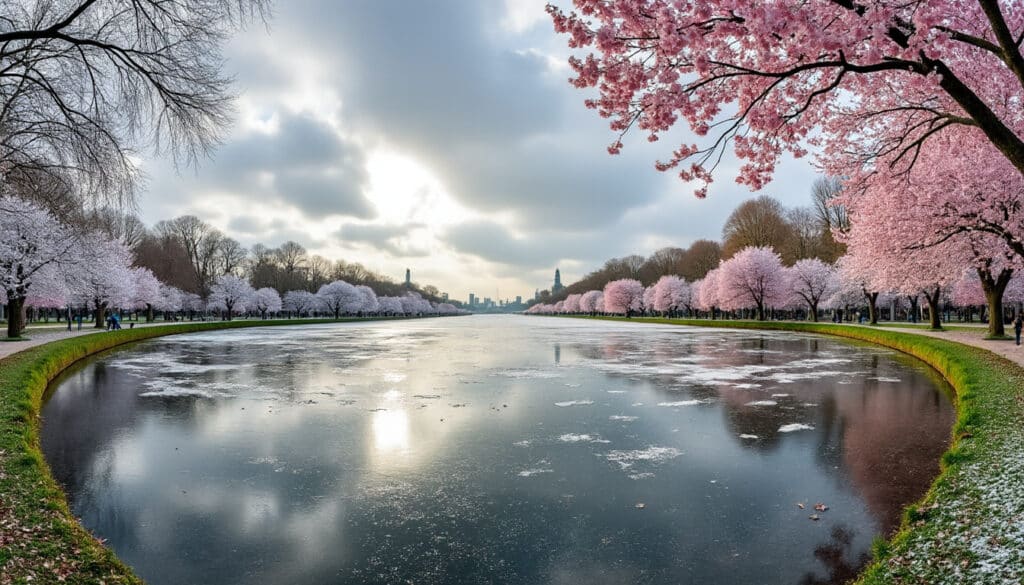
Berlin, with its vibrant culture and rich history, attracts millions of tourists each year. A key factor to consider when planning your visit is the weather, which shifts dramatically from month to month. This article provides an in-depth look at…

What is the weather like in Berlin?
Berlin, the vibrant capital of Germany, is known not only for its rich history and dynamic cultural scene but also for its unique weather patterns that can vastly vary throughout the year. Whether you’re a resident soaking in the Berlin…

